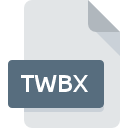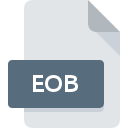
EOB File Extension
IBM FormatNet Content Engine Data Format
-
Category
-
Popularity0 ( votes)
What is EOB file?
Full format name of files that use EOB extension is IBM FormatNet Content Engine Data Format. EOB file format is compatible with software that can be installed on Windows system platform. EOB file belongs to the Misc Files category just like 6033 other filename extensions listed in our database. The software recommended for managing EOB files is FileNet eForms. On the official website of IBM developer not only will you find detailed information about theFileNet eForms software, but also about EOB and other supported file formats.
Programs which support EOB file extension
Programs that can handle EOB files are as follows. Files with EOB extension, just like any other file formats, can be found on any operating system. The files in question may be transferred to other devices, be it mobile or stationary, yet not all systems may be capable of properly handling such files.
Updated: 03/30/2020
How to open file with EOB extension?
Being unable to open files with EOB extension can be have various origins. Fortunately, most common problems with EOB files can be solved without in-depth IT knowledge, and most importantly, in a matter of minutes. The list below will guide you through the process of addressing the encountered problem.
Step 1. Get the FileNet eForms
 Problems with opening and working with EOB files are most probably having to do with no proper software compatible with EOB files being present on your machine. The solution is straightforward, just download and install FileNet eForms. The full list of programs grouped by operating systems can be found above. One of the most risk-free method of downloading software is using links provided by official distributors. Visit FileNet eForms website and download the installer.
Problems with opening and working with EOB files are most probably having to do with no proper software compatible with EOB files being present on your machine. The solution is straightforward, just download and install FileNet eForms. The full list of programs grouped by operating systems can be found above. One of the most risk-free method of downloading software is using links provided by official distributors. Visit FileNet eForms website and download the installer.
Step 2. Check the version of FileNet eForms and update if needed
 If the problems with opening EOB files still occur even after installing FileNet eForms, it is possible that you have an outdated version of the software. Check the developer’s website whether a newer version of FileNet eForms is available. Sometimes software developers introduce new formats in place of that already supports along with newer versions of their applications. This can be one of the causes why EOB files are not compatible with FileNet eForms. The most recent version of FileNet eForms is backward compatible and can handle file formats supported by older versions of the software.
If the problems with opening EOB files still occur even after installing FileNet eForms, it is possible that you have an outdated version of the software. Check the developer’s website whether a newer version of FileNet eForms is available. Sometimes software developers introduce new formats in place of that already supports along with newer versions of their applications. This can be one of the causes why EOB files are not compatible with FileNet eForms. The most recent version of FileNet eForms is backward compatible and can handle file formats supported by older versions of the software.
Step 3. Assign FileNet eForms to EOB files
If the issue has not been solved in the previous step, you should associate EOB files with latest version of FileNet eForms you have installed on your device. The next step should pose no problems. The procedure is straightforward and largely system-independent
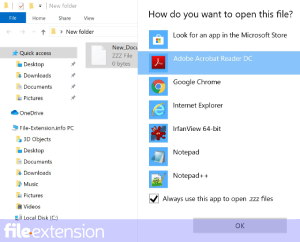
Change the default application in Windows
- Clicking the EOB with right mouse button will bring a menu from which you should select the option
- Next, select the option and then using open the list of available applications
- Finally select , point to the folder where FileNet eForms is installed, check the Always use this app to open EOB files box and conform your selection by clicking button
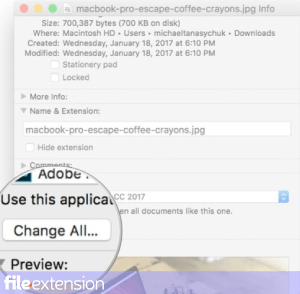
Change the default application in Mac OS
- Right-click the EOB file and select
- Open the section by clicking its name
- From the list choose the appropriate program and confirm by clicking .
- A message window should appear informing that This change will be applied to all files with EOB extension. By clicking you confirm your selection.
Step 4. Check the EOB for errors
You closely followed the steps listed in points 1-3, but the problem is still present? You should check whether the file is a proper EOB file. Being unable to access the file can be related to various issues.
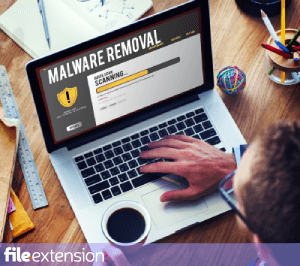
1. Check the EOB file for viruses or malware
If the file is infected, the malware that resides in the EOB file hinders attempts to open it. Immediately scan the file using an antivirus tool or scan the whole system to ensure the whole system is safe. If the scanner detected that the EOB file is unsafe, proceed as instructed by the antivirus program to neutralize the threat.
2. Check whether the file is corrupted or damaged
Did you receive the EOB file in question from a different person? Ask him/her to send it one more time. During the copy process of the file errors may occurred rendering the file incomplete or corrupted. This could be the source of encountered problems with the file. If the EOB file has been downloaded from the internet only partially, try to redownload it.
3. Check if the user that you are logged as has administrative privileges.
Some files require elevated access rights to open them. Log in using an administrative account and see If this solves the problem.
4. Make sure that the system has sufficient resources to run FileNet eForms
If the systems has insufficient resources to open EOB files, try closing all currently running applications and try again.
5. Check if you have the latest updates to the operating system and drivers
Regularly updated system, drivers, and programs keep your computer secure. This may also prevent problems with IBM FormatNet Content Engine Data Format files. It is possible that one of the available system or driver updates may solve the problems with EOB files affecting older versions of given software.
Do you want to help?
If you have additional information about the EOB file, we will be grateful if you share it with our users. To do this, use the form here and send us your information on EOB file.

 Windows
Windows 
